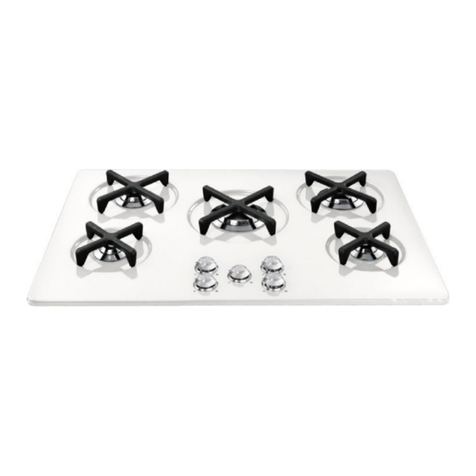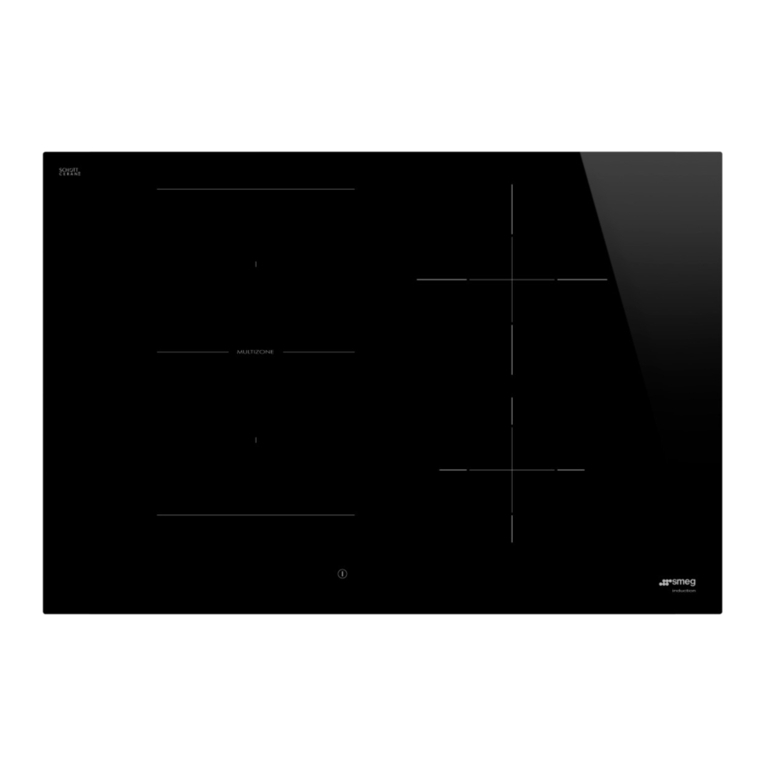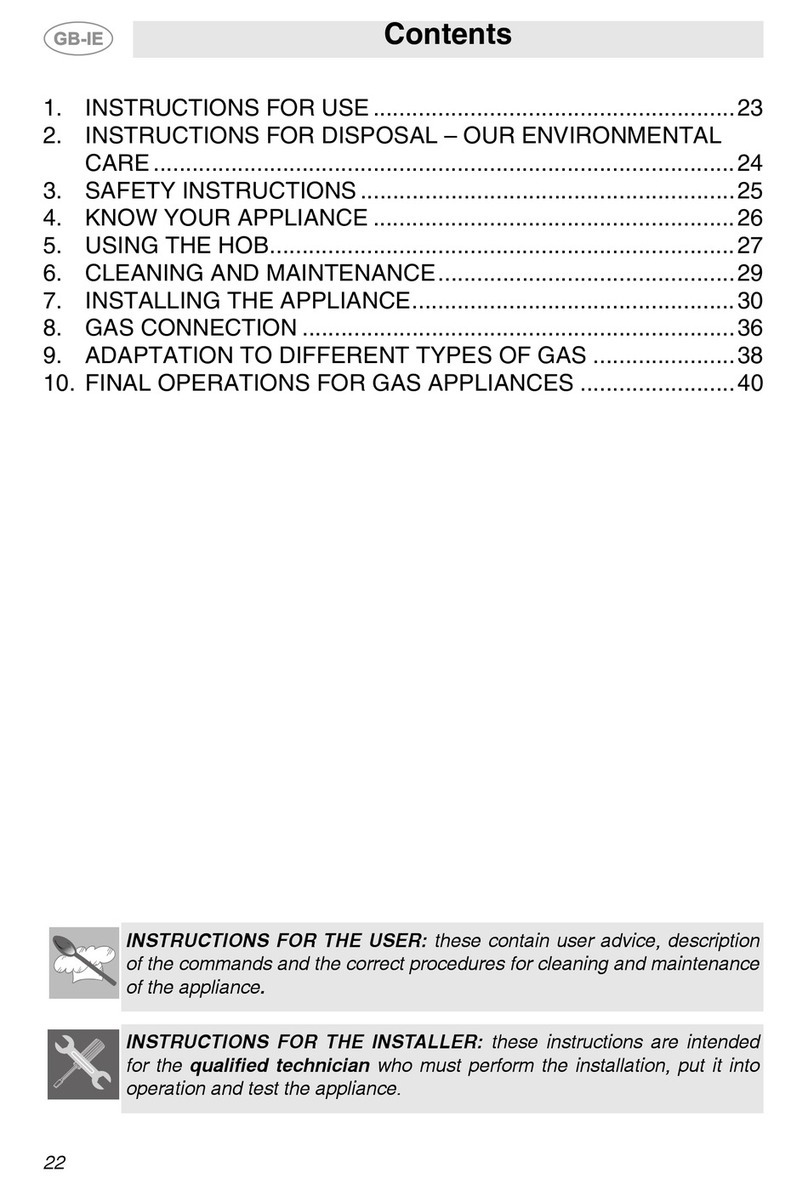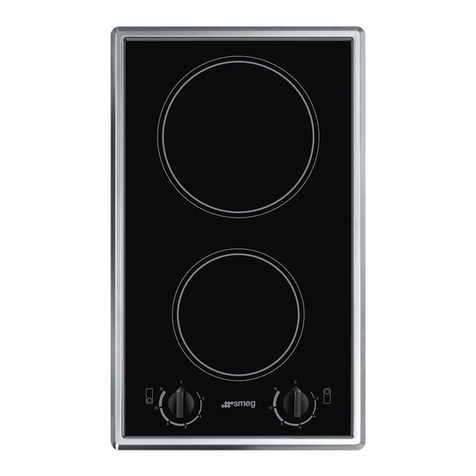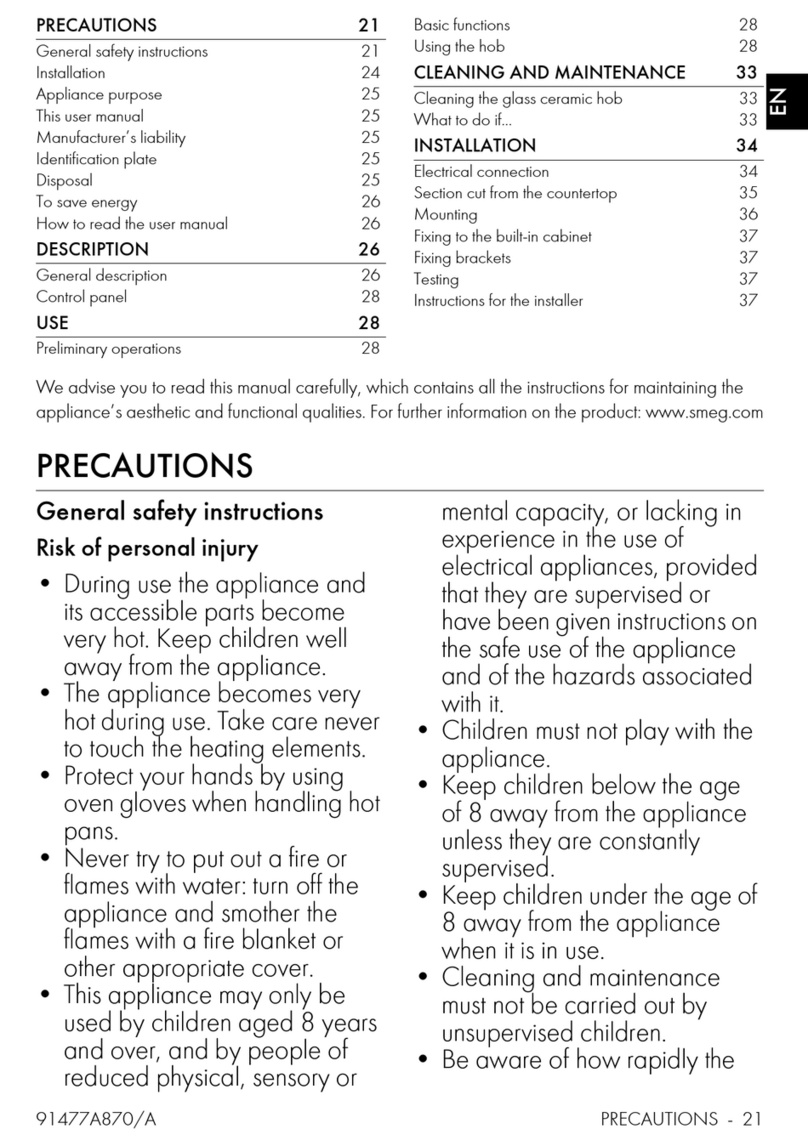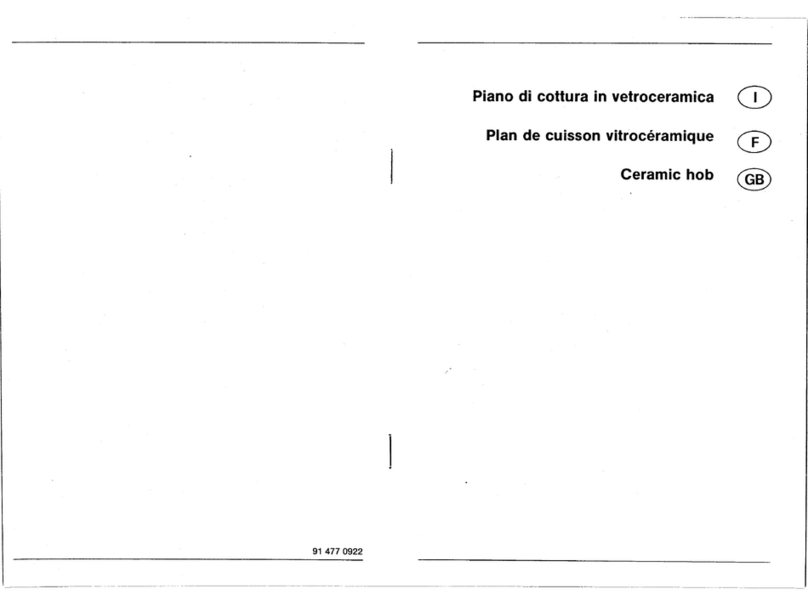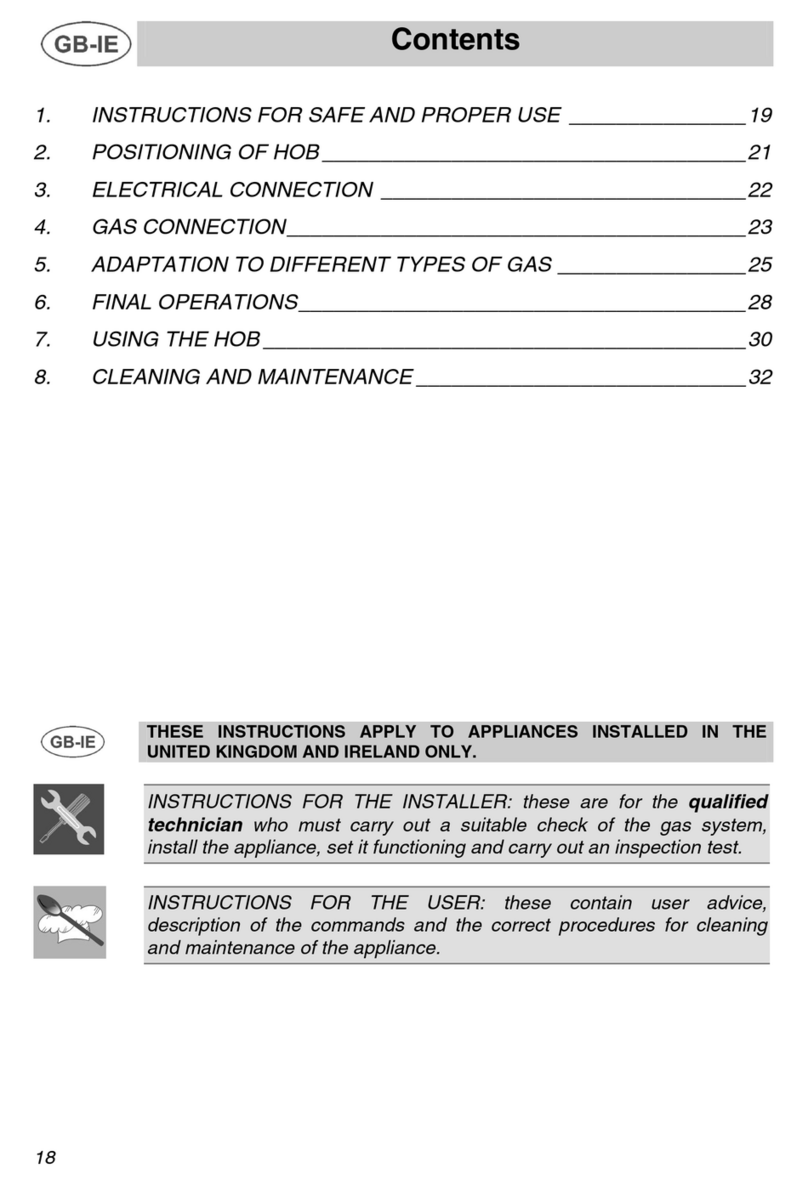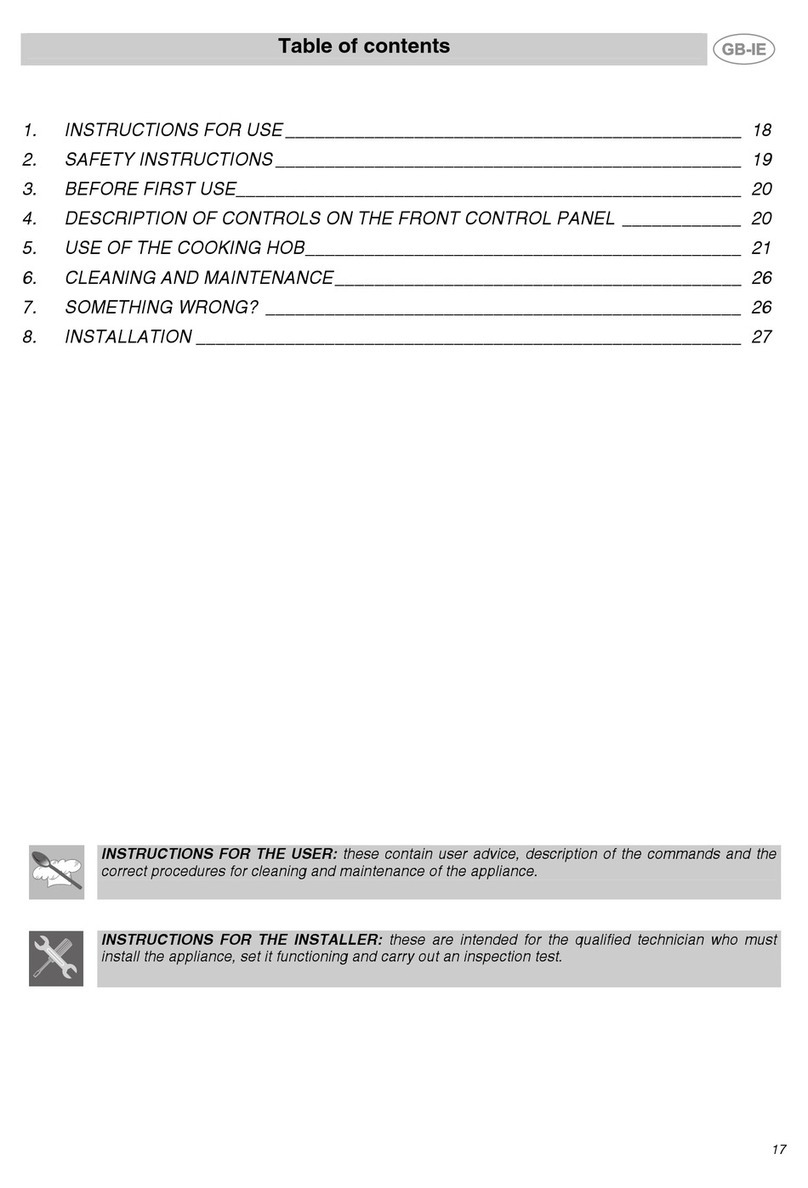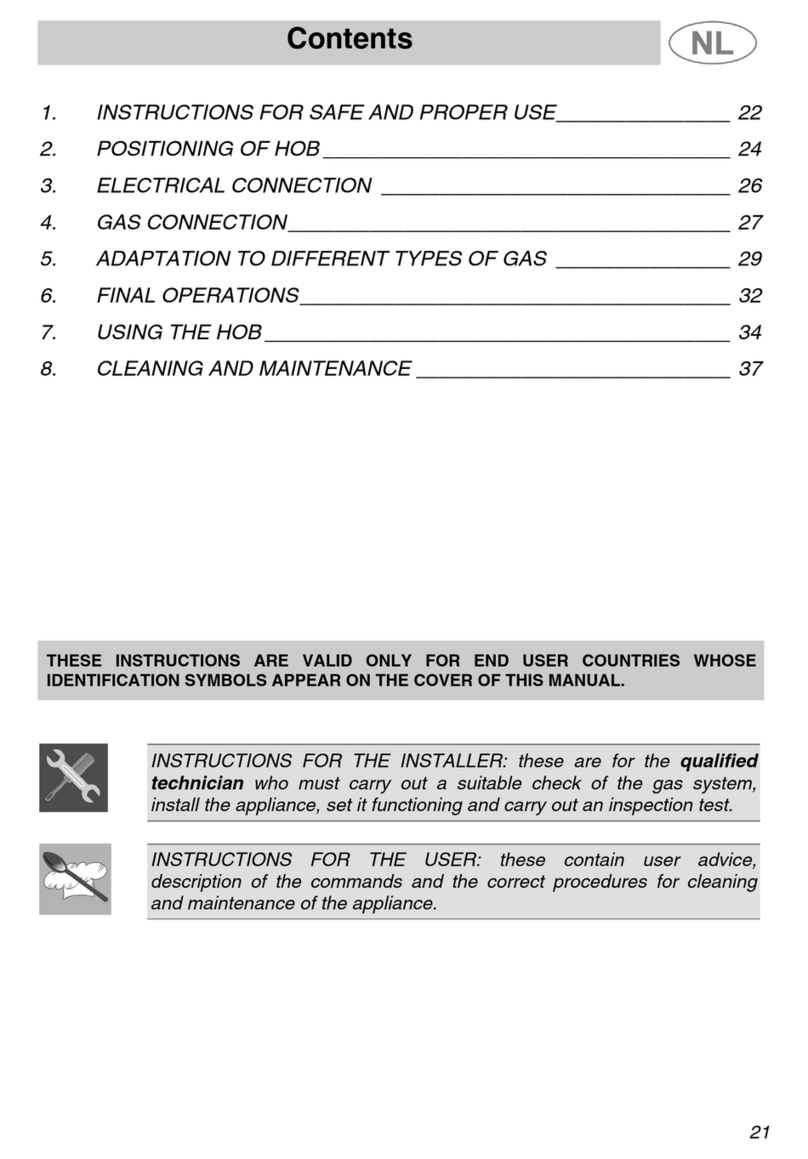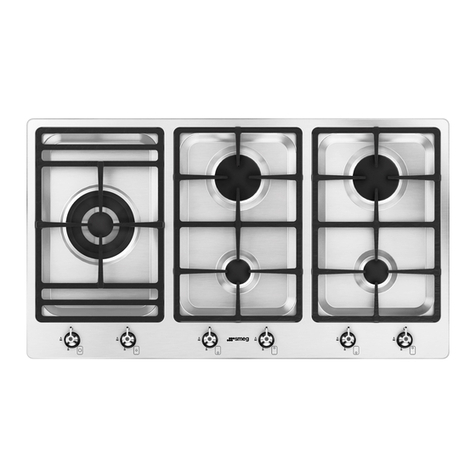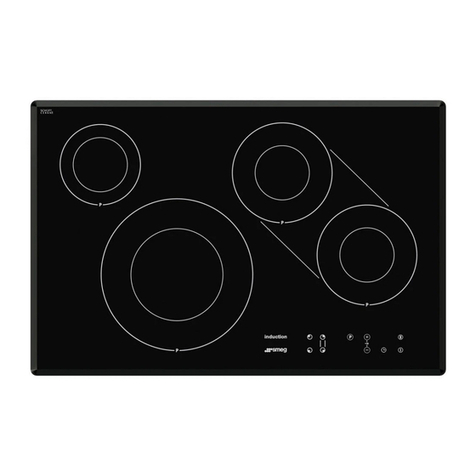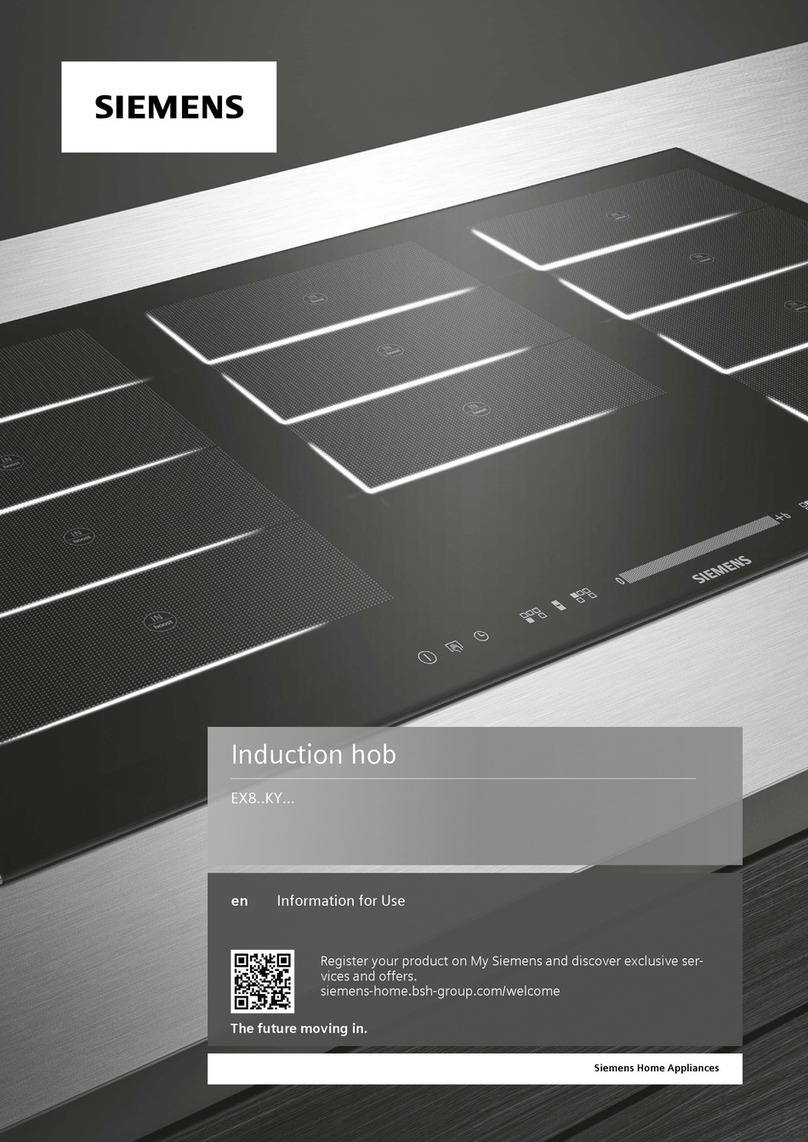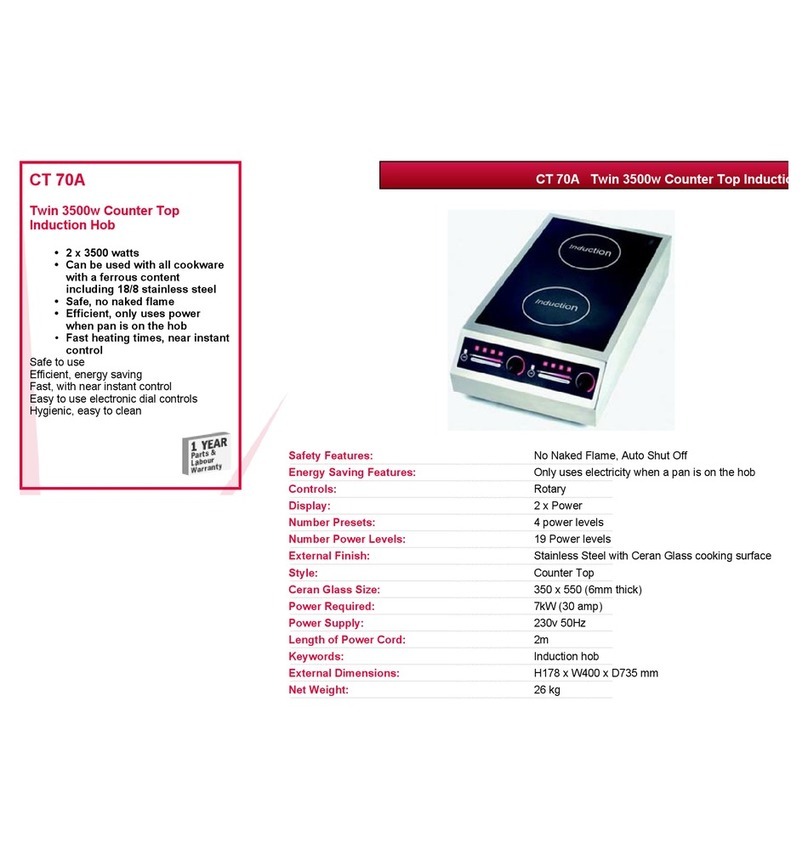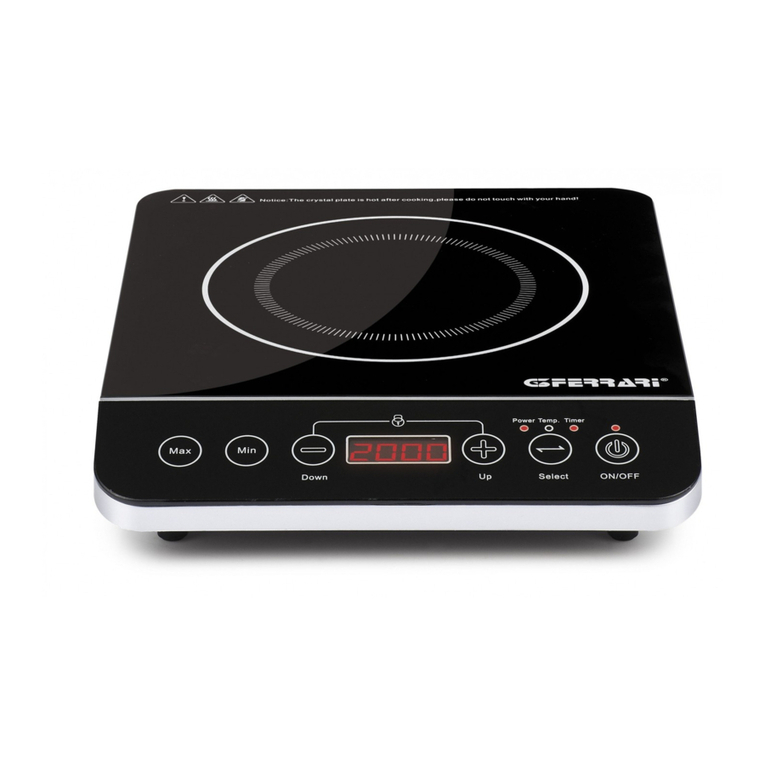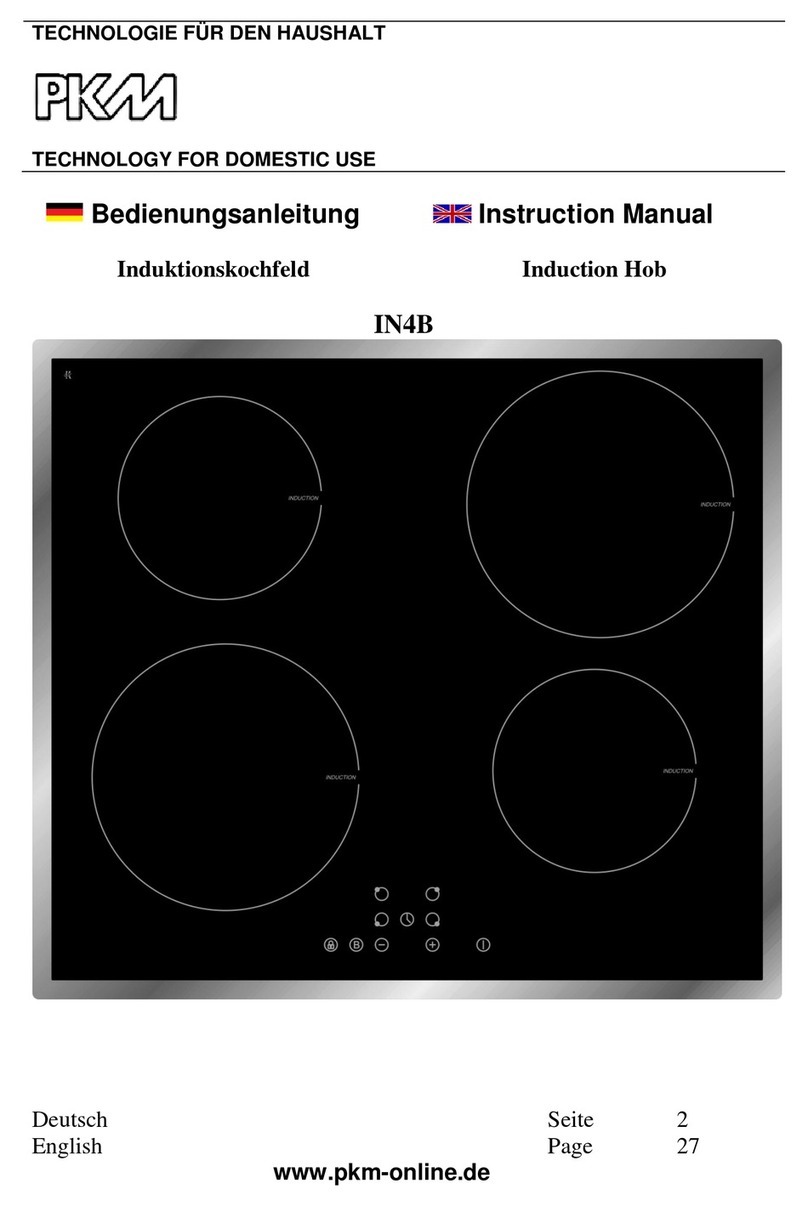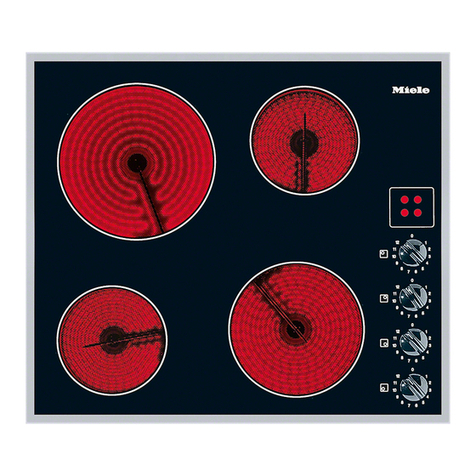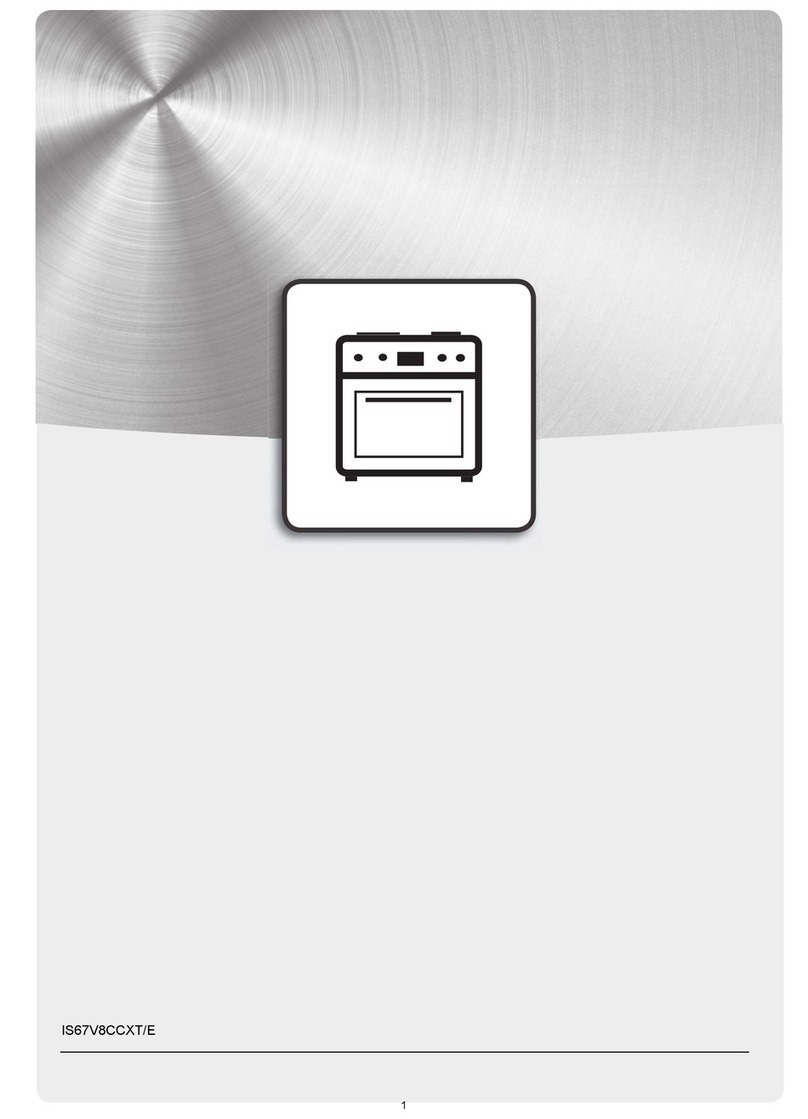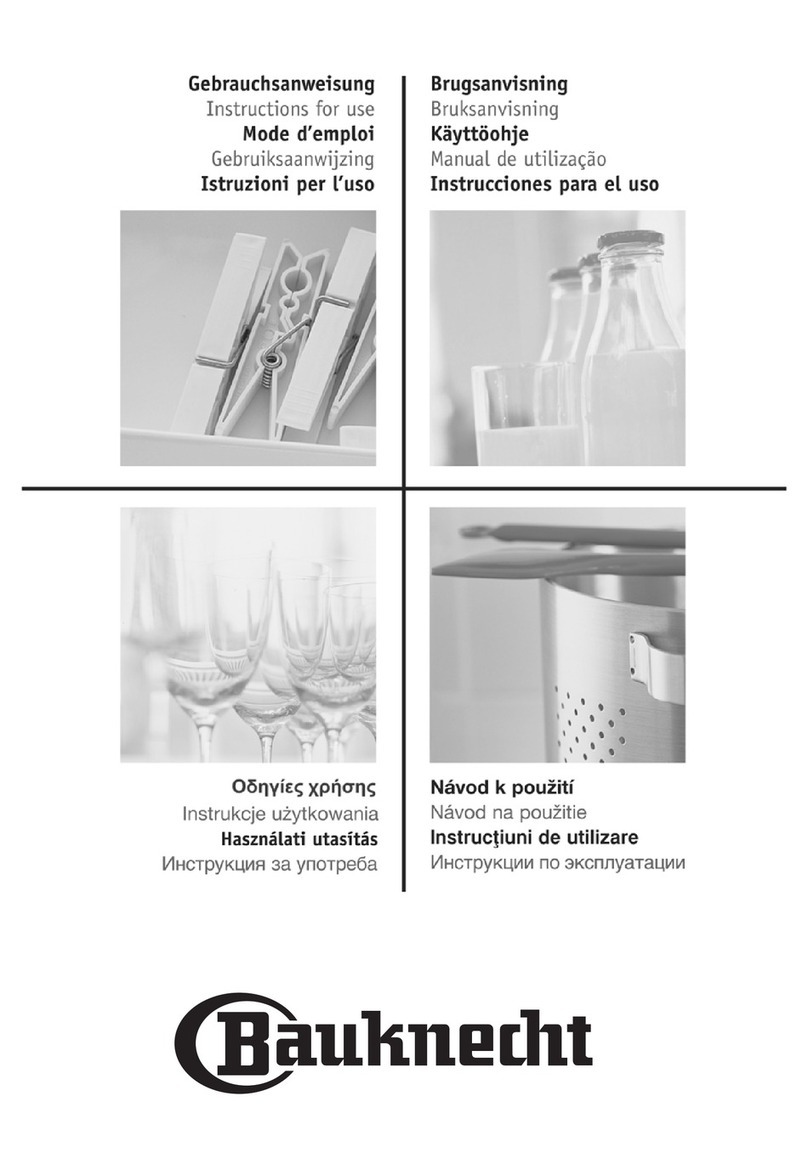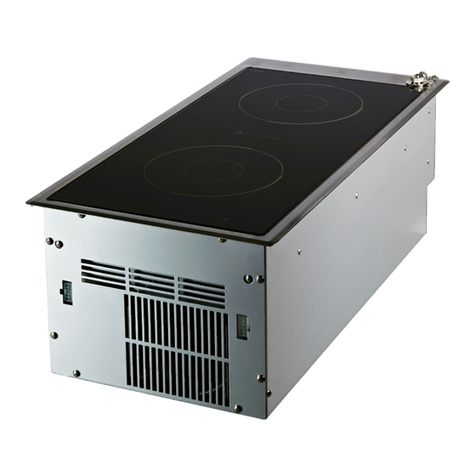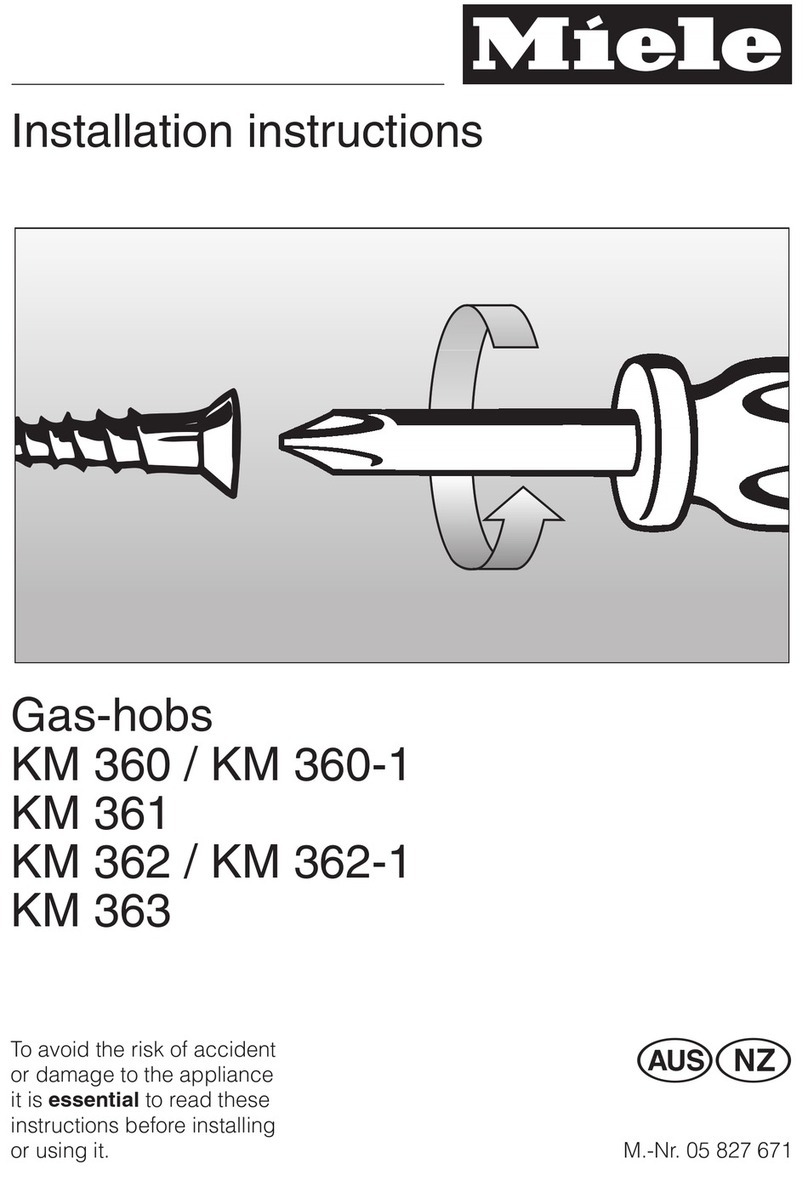
Instructions
43
EN
• Position the appliance into the
cabinet cut-out with the help of a
second person.
• To prevent any possible
overheating, the appliance should
not be installed behind a
decoration door or a panel.
• Before any operation on the
appliance (installation,
maintenance, positioning or
movement) always wear PPM.
• Before performing any operation
on the appliance, switch off the
power supply.
• Have qualified personnel carry
out installation and assistance
interventions according to the
standards in force.
• Have the gas connection
performed by authorised staff.
• Installation using a hose must be
carried out so that the length of the
hose does not exceed 2 metres
when fully extended for steel hoses
and 1.5 metres for rubber hoses.
• The hoses should not come into
contact with moving parts and
should not be crushed in any way.
• If required, use a pressure
regulator that complies with
current regulations.
• After carrying out any operation,
check that the tightening torque of
gas connections is between
10 Nm and 15 Nm.
• At the end of the installation,
check for any leaks with a soapy
solution, never with a flame.
• Have the electrical connection
performed by authorised
technicians.
• The appliance must be connected
to ground in compliance with
electrical system safety standards.
• Use cables withstanding a
temperature of at least 90°C.
• The tightening torque of the
screws of the terminal board leads
must be 1.5 - 2 Nm.
• If it is necessary to replace the
power cable, this must only be
performed by a qualified
technician.
• Before installation, make sure that
the local gas supply (gas type
and pressure) and the settings of
the domestic appliance are
compatible.
• The settings for this domestic
appliance are shown on the gas
setting label.
